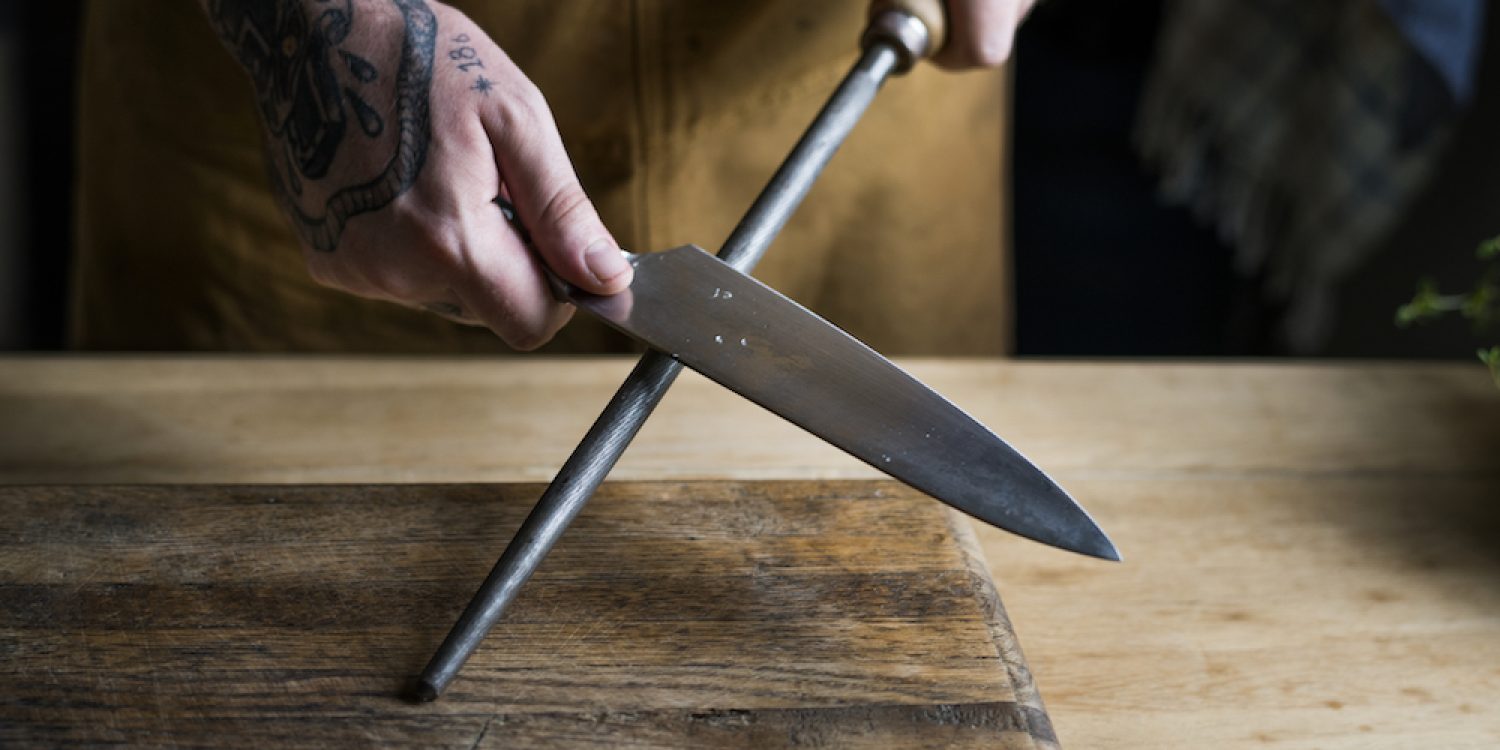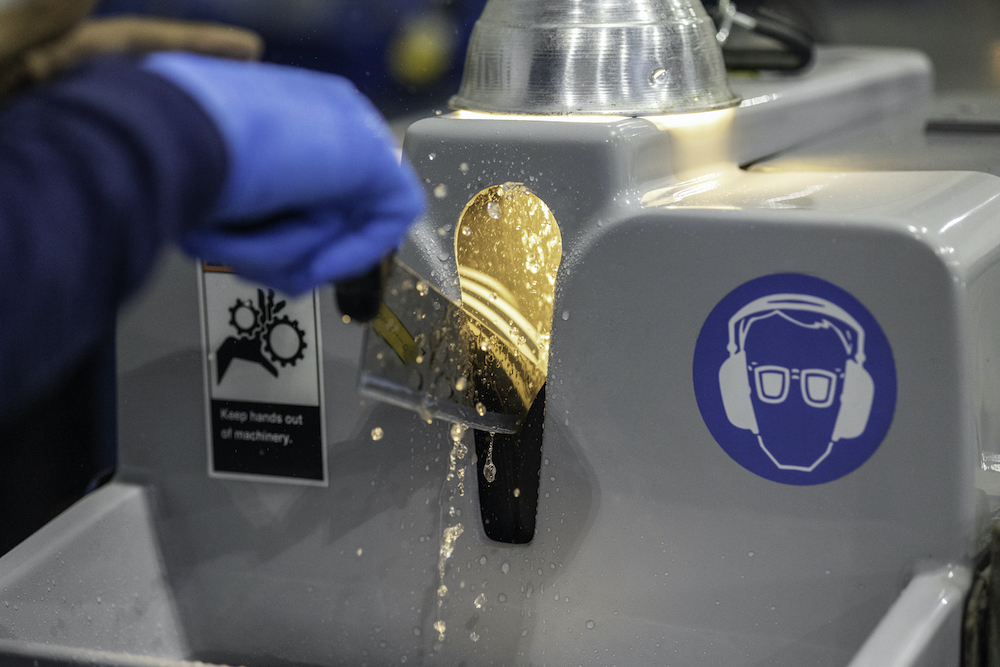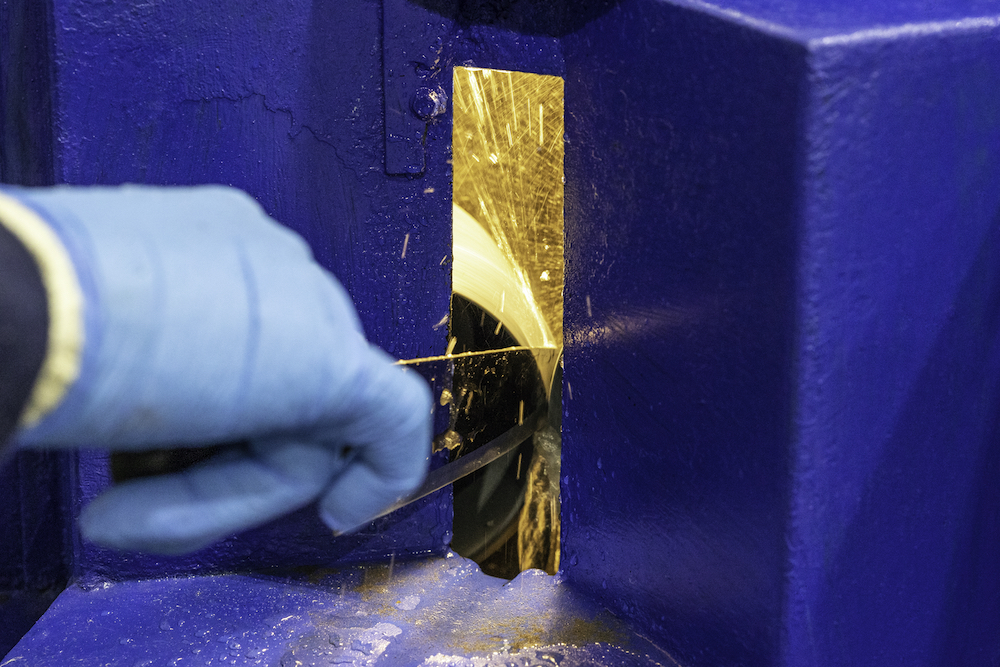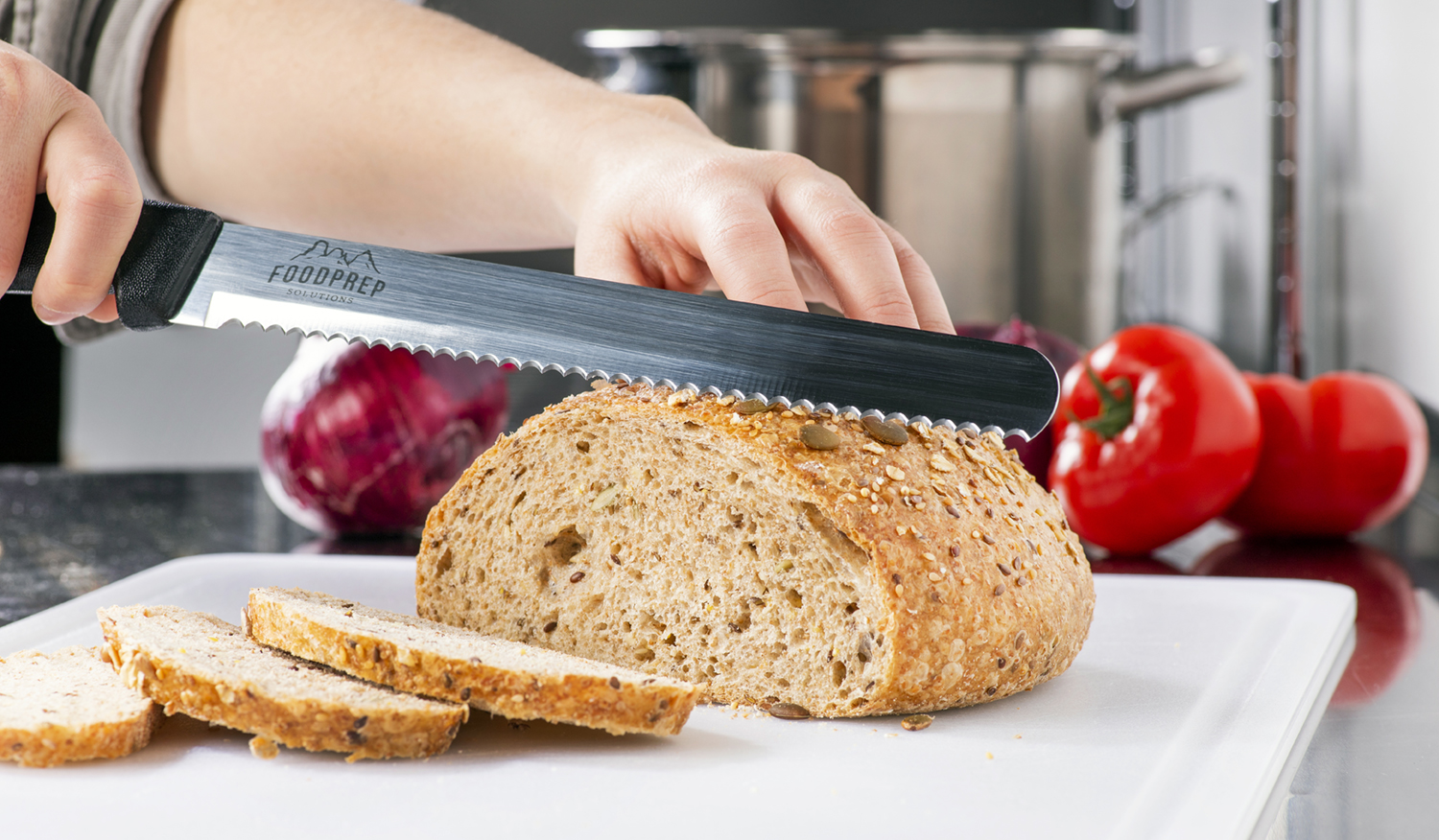What Is a Sharpening Steel?
A dull knife is not only harder to wield than a sharp knife, but it creates a dangerous kitchen environment. Injuries from dull knives actually cause more severe cuts because they pull and tear the skin as opposed to the straight slice of a sharp knife. Regular knife sharpening should be a priority for a busy kitchen, and a sharpening steel is an element of that strategy.
The most common knife maintenance sharpening steel is called a honing steel or a honing rod. It’s a common misconception that the honing steel sharpens the knife blade. In actuality, it realigns the edge of the knife, smoothing out the curl created by the blade folding over onto itself from repeated contact with cutting surfaces.
A honing steel has a needed space in every kitchen. It’s recommended to hone your knife about every three uses for the benefit of prolonging the life of the blade and lengthening the duration of time between professional sharpenings. It’s also helpful to have an immediate option to make a dangerously dull knife safe again.
For these in-a-pinch sharpening tools, the honing steel is the only one you should use. It’s simply realigning the blade and not removing a microscopic layer of metal to reveal a new, sharp edge. To truly sharpen a knife blade, harder materials than steel must be used. Diamond, ceramic, or stone will sharpen your knives, but professionals who know the proper technique should be doing that.
How To Use a Sharpening Steel
To properly hone your knife with a sharpening steel, follow these steps:
- Position the Steel
For the most stability and control, hold your knife in your dominant hand while your other hand positions the steel vertically over a cutting board or other surface that won’t shift with pressure. - Angle the Steel and Knife
In general, most knives are sharpened at approximately a 20 degree angle. You can find this angle by first placing your knife blade against the steel at a 90 degree angle, then cutting that angle in half, and then roughly in half again. The resulting angle should resemble the letter V. - Hone the Edge
While applying light to medium pressure, take passes with your knife across the steel. Don’t dig into the steel, instead, move the blade in a gentle slicing motion. Accuracy of the angle and the pressure is more important than speed, so take your time to keep it consistent and avoid cutting yourself. Be sure you’re moving the knife and not the sharpening steel. - Do Both Sides
Take about 5-10 strokes on each side of the knife blade, using the opposite side of the steel for the alternate side. Give each side the same number of strokes to maintain an even cutting edge. Take care that only the cutting edge of the knife blade is touching the steel. If you use the honing steel on the side of the blade you run the risk of scratching your blade. - Wash the Knife
Wash and dry your blade before using it or storing it away.
When a Sharpening Steel Doesn’t Cut It
While very useful for common knife maintenance, a sharpening steel has some drawbacks to be aware of. It’s very easy to create inconsistent edge quality to the knife blade when using a honing steel and the risk of injury is always present. So stay diligent when using the sharpening steel and remember to go slow.
Since the proper use for a sharpening steel is simply to realign, or uncurl, the knife’s edge, every knife will still need regular, professional sharpenings to stay in top-performing shape. Over time, the honing steel will no longer produce the desired results and can then affect food quality and kitchen safety. When sharpening steel use isn’t sufficient to maintain an edge, you’ll need to take advantage of FoodPrep’s cutlery exchange programs. Extending the life of your knives is always a good investment and we’re always here to help make that choice effortless.





